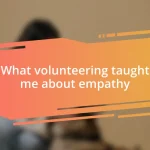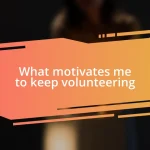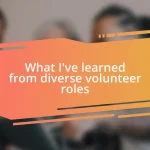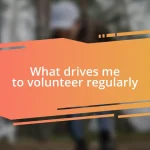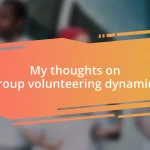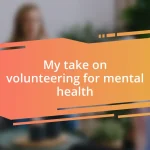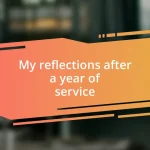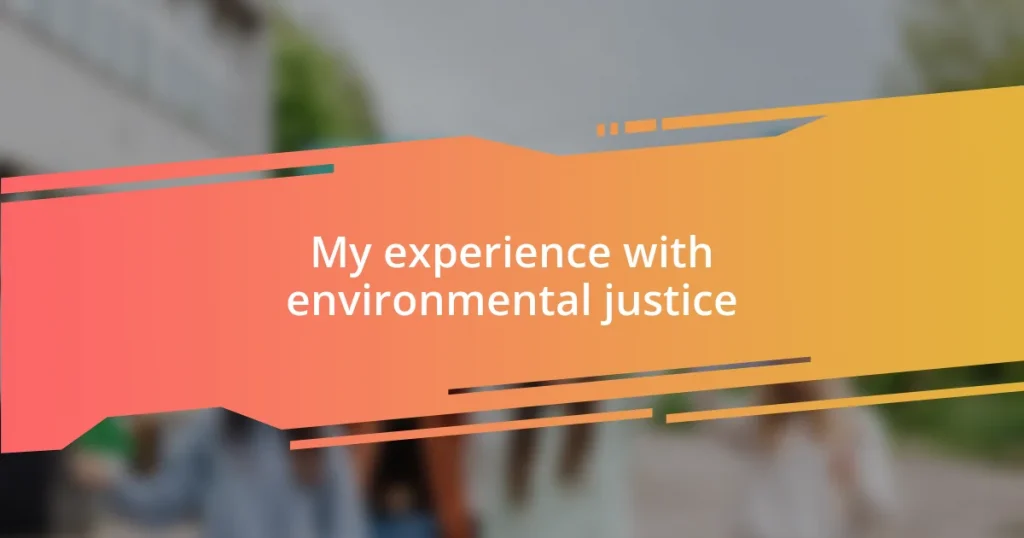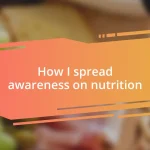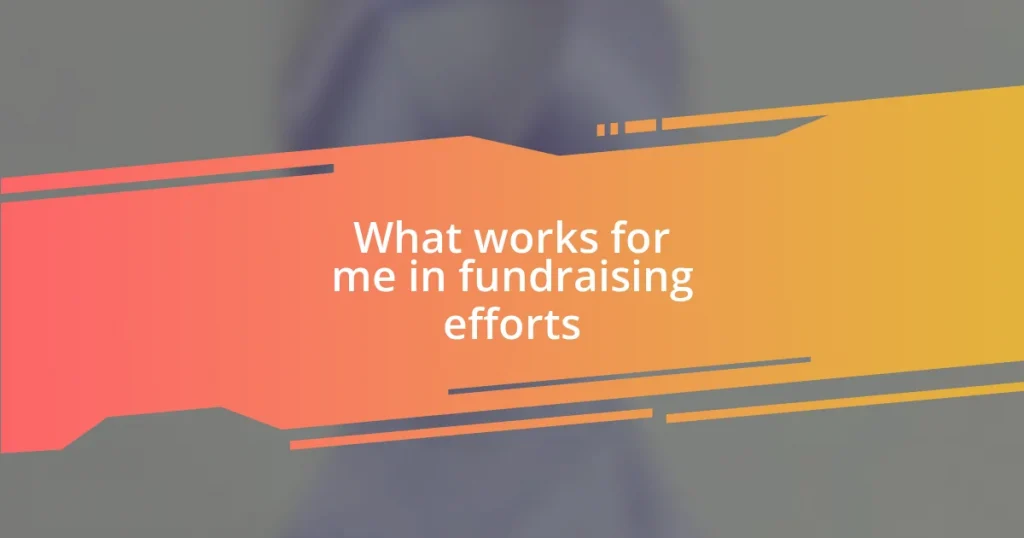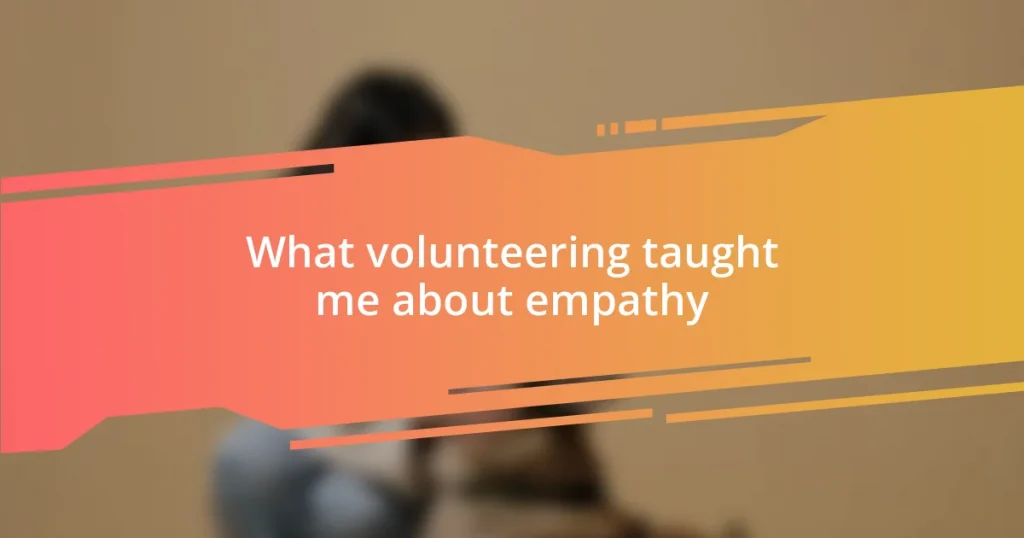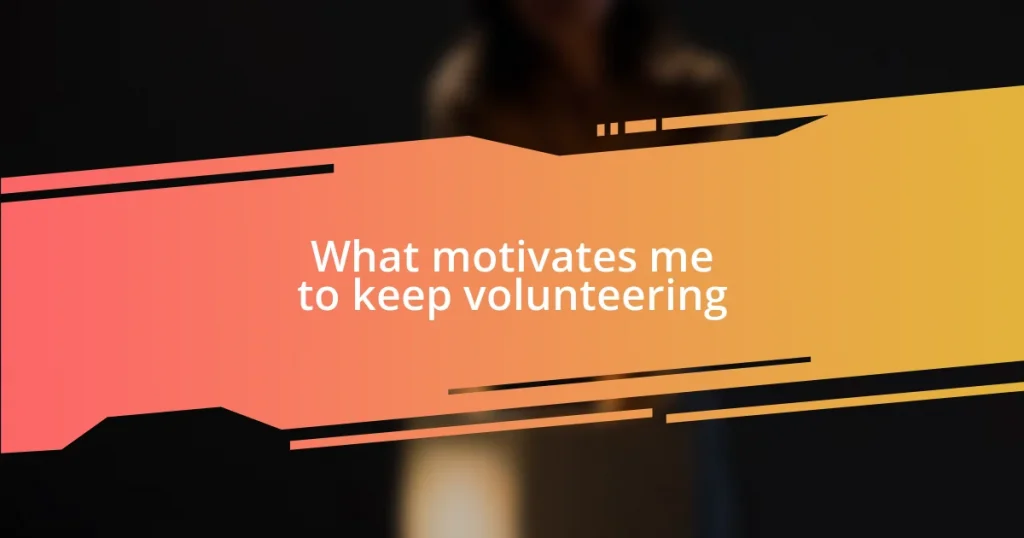Key takeaways:
- Environmental justice emerged from the civil rights movement, highlighting the disproportionate burden of pollution on marginalized communities, notably illustrated by the 1987 UCC report on toxic waste sites.
- Key principles of environmental justice include equity, participatory democracy, prevention, transparency, and accountability, emphasizing fair treatment and community involvement in environmental policies.
- Engaging communities through education, activism, and storytelling fosters a united effort to address environmental injustices, creating lasting bonds and inspiring collective action.
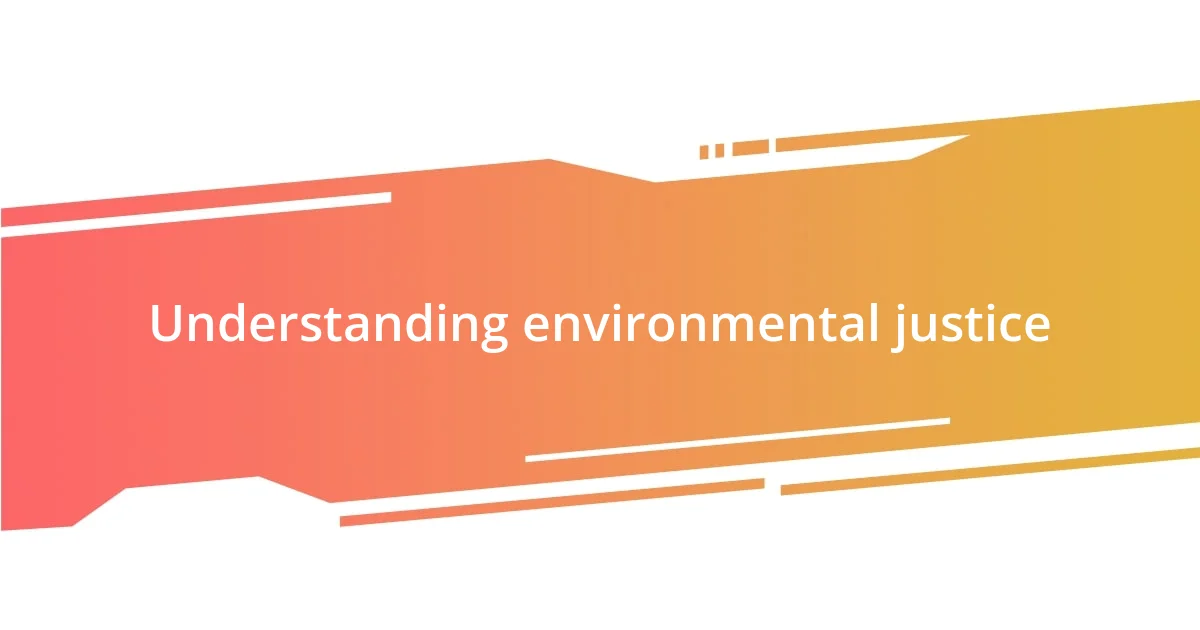
Understanding environmental justice
Environmental justice is a concept that seeks to address the inequitable distribution of environmental benefits and burdens across different communities. I remember standing in a community meeting, feeling the palpable tension as residents voiced their concerns about a nearby waste facility. The frustration was not just about the smell or the dust; it was about feeling invisible and unheard in decisions that directly impacted their health and well-being.
When I first learned about environmental justice, the importance of recognizing marginalized communities hit me hard. How could we overlook the voices of people facing disproportionate pollution? It struck me that this wasn’t just about the environment; it was about social equity and health. Each time I think back to that meeting, I realize I’m motivated to advocate for those whose concerns are often dismissed.
Understanding environmental justice means acknowledging that pollution doesn’t impact every community equally. For instance, during a visit to an industrial neighborhood, I saw families living just blocks from hazardous waste sites. It made me wonder—how many more stories remain untold? This personal connection to the issue has deepened my commitment to promoting policies that ensure everyone, regardless of their background, has the right to a healthy environment.
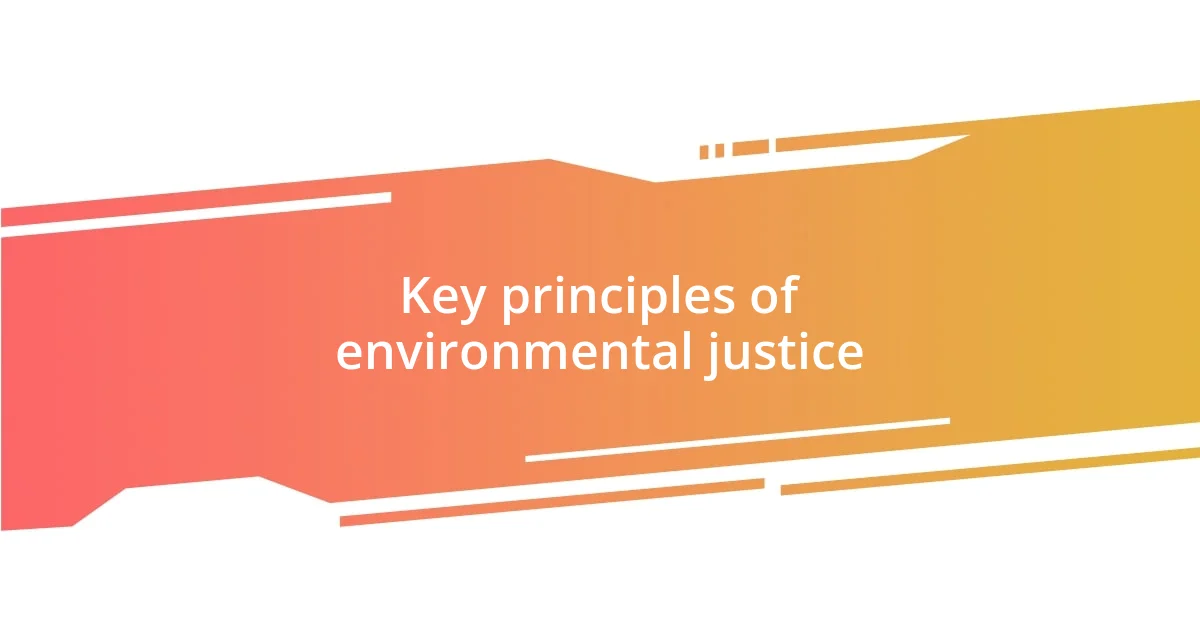
Key principles of environmental justice
Environmental justice is built on several key principles that guide its mission. One crucial principle is equity, emphasizing that all communities deserve equal protection from environmental hazards. I remember volunteering for a local environmental campaign where we highlighted how low-income neighborhoods often bear the brunt of pollution. It was heart-wrenching to hear stories from families who felt trapped in environments that jeopardized their health. This experience reinforced my understanding that achieving fairness in environmental policies is not just a goal; it’s a necessity for many.
Here are some key principles of environmental justice:
- Equity: Ensuring fair treatment and involvement of all people in environmental laws and policies.
- Participatory Democracy: Empowering communities to participate in decision-making processes affecting their environment.
- Prevention: Focusing on preventing harm to communities rather than mitigating damage after it occurs.
- Transparency: Maintaining open communication to build trust and inform communities about environmental risks and regulatory actions.
- Accountability: Holding corporations and government agencies responsible for environmental impacts, ensuring they adhere to fair practices.
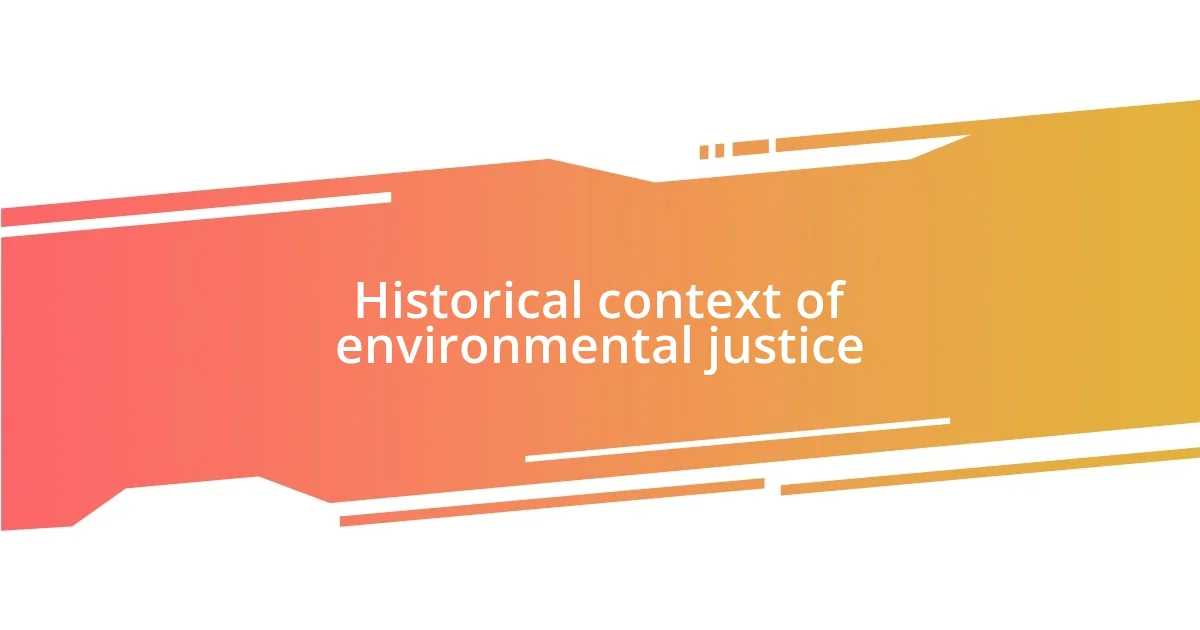
Historical context of environmental justice
The historical roots of environmental justice can be traced back to the civil rights movement of the 1960s and 70s. I vividly recall reading about the protests led by communities like those in Warren County, North Carolina, who rallied against the siting of a toxic landfill in their neighborhood. It was more than just a protest; it was a fight for dignity and recognition that their lives were as valuable as any other. This pivotal moment highlighted how marginalized communities often bear a disproportionate burden of environmental hazards.
As I delved deeper into this topic, I discovered that the concept of environmental justice gained formal footing through the United Church of Christ’s 1987 report that documented the hazardous waste sites in or near communities predominantly populated by people of color. Feeling this injustice echoed within me, I realized that understanding history isn’t just about facts and dates—it’s about recognizing the pain and struggle that continues today. This awareness fuels my passion for advocating for equitable solutions that honor those who have fought for their rights.
In more recent years, events like the Flint water crisis brought these historical injustices back into focus, showing us that the fight for environmental justice is ongoing. I remember watching the news and feeling a mix of anger and sorrow as I learned about families enduring contaminated water. This very moment served as a stark reminder that the past is not merely history; it actively shapes our present and future. We must carry those lessons forward, understanding the struggles that have paved the way for today’s environmental justice movement.
| Year | Event |
|---|---|
| 1960s-70s | Civil rights movement raises awareness about environmental issues in marginalized communities. |
| 1987 | UCC’s report links race and exposure to toxic waste, marking a formal recognition of environmental justice. |
| 2014 | Flint water crisis highlights ongoing disparities in environmental protection and health risks. |
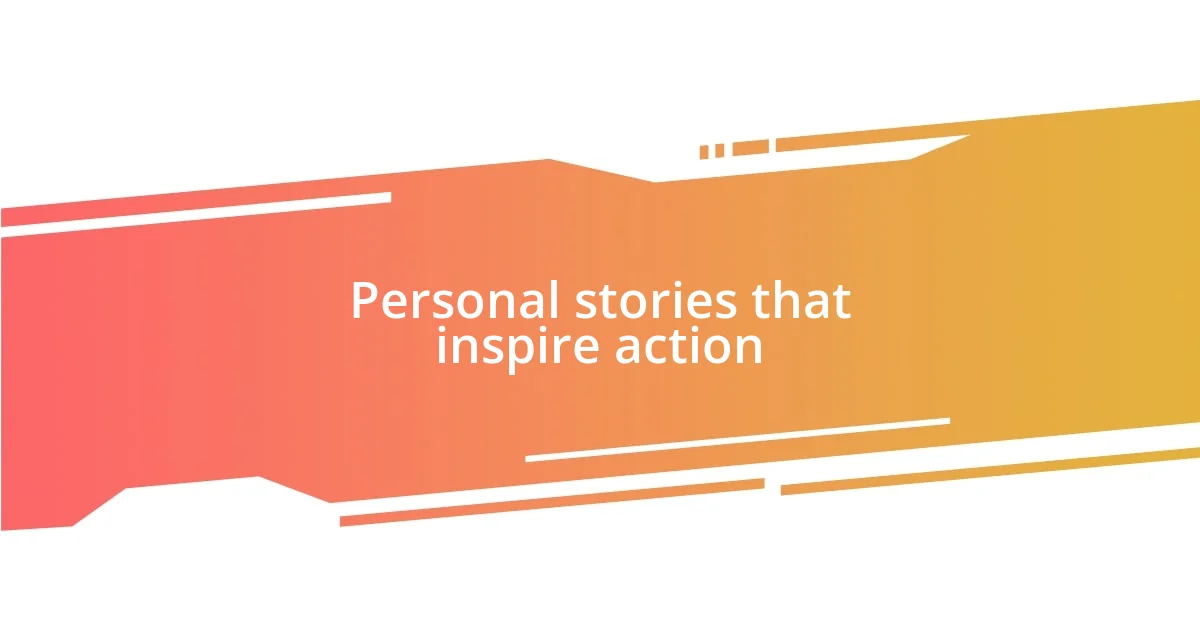
Personal stories that inspire action
My friend Maria grew up in a community overshadowed by industry. It’s hard to describe the weight of her stories, where she recounted childhoods spent dodging sprays of unfiltered waste from nearby plants. Hearing her talk about the fear her family had regarding the air quality made me reflect on why some people seem invisible in environmental conversations. Isn’t it astounding how personal narratives can light a fire under policy change?
At a local town hall meeting, I shared my own family’s experience. My grandmother’s health deteriorated due to pollution from a factory that had long been operating in silence, hidden away from scrutiny. I still remember how passionately I expressed her struggle, looking into the eyes of attendees who nodded in understanding. When we share these heart-wrenching stories, we build connections and drive the urgency for action. It’s through these personal anecdotes that we transform statistics into human experiences that demand our attention.
In another instance, I attended an environmental justice workshop that featured individuals from various walks of life. One woman recounted her battle to close a waste treatment facility in her neighborhood—a story brimming with resilience and the bonds formed through collective action. As I listened, I couldn’t help but ask myself: how many more stories like hers are waiting to be told? Each voice is a thread in the larger tapestry of our movement, highlighting the need for a collective response to injustices that often go unnoticed.
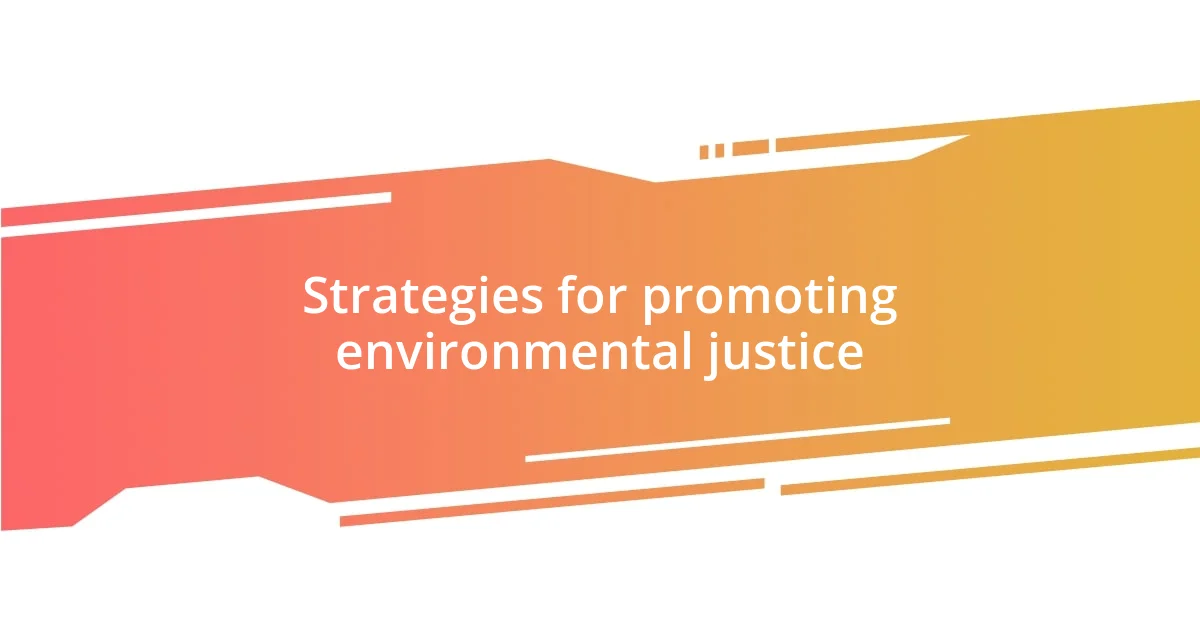
Strategies for promoting environmental justice
One effective strategy for promoting environmental justice is engaging community members in decision-making processes. I remember attending a community forum where residents voiced their concerns about a proposed industrial plant. It was empowering to witness firsthand how, when given a platform, people can articulate their needs and fears. The change began to ripple as local officials started recognizing the importance of hearing these voices. By prioritizing community engagement, we’re not just advocating for environmental justice; we’re fostering a sense of ownership among those most affected.
Another impactful approach is education and awareness. In my experience, I’ve seen how workshops focusing on environmental health can ignite passion within communities. I participated in one such event, where local leaders educated attendees on the health impacts of pollution. The atmosphere was electric, and you could feel the collective resolve grow stronger as residents learned how to conduct air quality tests. It’s enlightening to see that knowledge not only empowers individuals but also strengthens community ties. Isn’t it incredible how informed communities can challenge injustices more effectively?
Additionally, forming coalitions with diverse stakeholders can drive change more effectively. I recall collaborating with local organizations and environmental groups to address issues in underserved neighborhoods. Together, we organized clean-up initiatives that not only beautified the area but also raised awareness about sustainability practices. Seeing people from different backgrounds come together for a common cause was inspiring. It made me realize that alliances can amplify voices and create a more formidable front in the struggle for environmental justice. Building these connections reshapes how we confront challenges and encourages a united effort towards meaningful change.
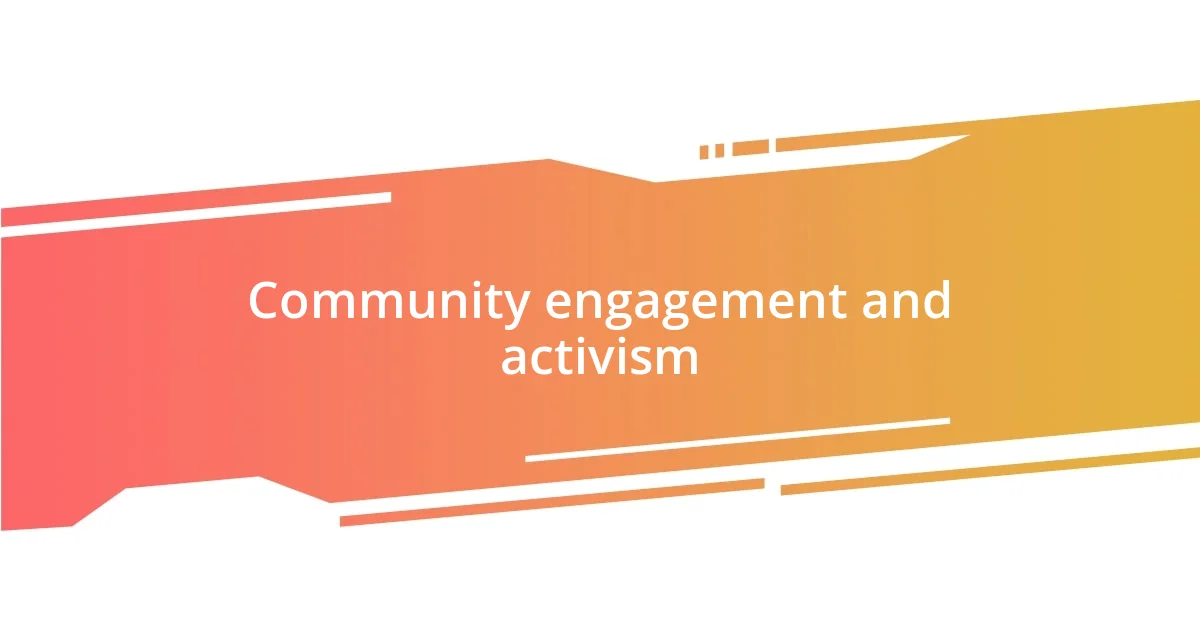
Community engagement and activism
Engaging with my community around issues of environmental justice has been transformative, not just for me but for those around me. At a recent neighborhood clean-up, I saw firsthand how collective action can forge strong bonds. As we picked up litter, an elderly man began to share stories about the history of our park, revealing his connection to the land. Isn’t it remarkable how a simple act can unearth shared experiences and inspire everyone to care more deeply about their environment?
I remember organizing a small rally to raise awareness of a proposed waste incinerator in our area. The energy was palpable as we crafted signs and shared our concerns. Ya know, seeing families come together, each person with their own unique story and reason for being there, reinforced my belief in the power of grassroots activism. It made me wonder: what if every person who felt impacted by environmental issues decided to speak out? The ripple effects could be monumental.
In one passionate discussion group, we strategized not just how to confront the waste facility, but also how to amplify our message. I vividly recall one participant proposing we engage local schools to educate the next generation. It struck me that fostering awareness among youth wasn’t just about immediate change; it was planting seeds for lasting impacts. Can you imagine a future where informed children grow up advocating for the environment? It’s exhilarating to think about the legacy we create through community activism.
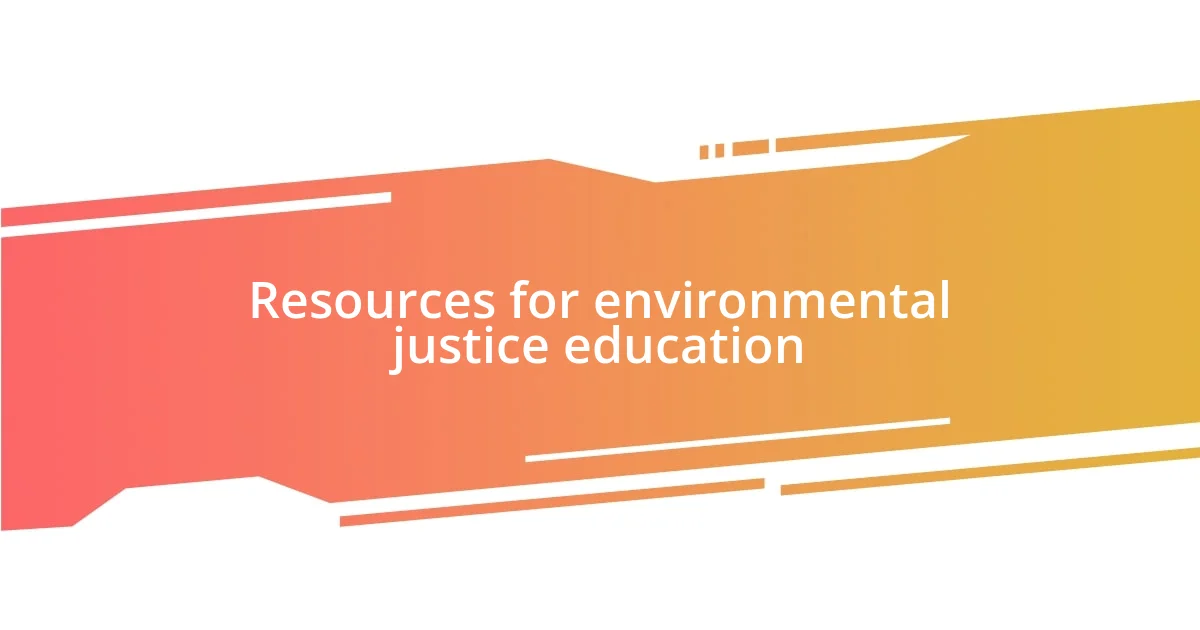
Resources for environmental justice education
When it comes to environmental justice education, I often recommend resources that center community narratives. I came across a documentary titled “The Little Things” that highlights grassroots movements across the country. Watching it brought tears to my eyes as it showcased the struggles and resilience of marginalized communities, reminding me that every story matters. Have you ever seen a film that changed your perspective? For me, this one did, fueling my desire to learn more about the people behind the statistics often reported in environmental studies.
Books also serve as powerful tools. I’ve read “Dumping in Dixie” by Aileen Mioko Smith, which examines how waste facilities disproportionately affect Black communities in the South. Reading her work opened my eyes to the systemic issues lurking beneath environmental policies. It made me think: how often do we consider the ramifications of industrialization on vulnerable populations? Mioko’s insights underscore the urgent need to educate ourselves, as knowledge is indeed a cornerstone for advocacy. Have you found a book that spurred your passion for social justice?
Additionally, I believe online platforms can greatly enhance our understanding of environmental justice. I often visit the Environmental Justice Atlas, which maps out social activism against environmental injustices around the globe. While browsing through the cases, I felt a sense of connectivity to people striving for change. It made me ponder our collective power: what if we all took the time to engage with these resources? By doing so, we might cultivate a broader base of informed advocates ready to challenge inequalities. Don’t you think every little effort counts in the fight for a more just and equitable society?

